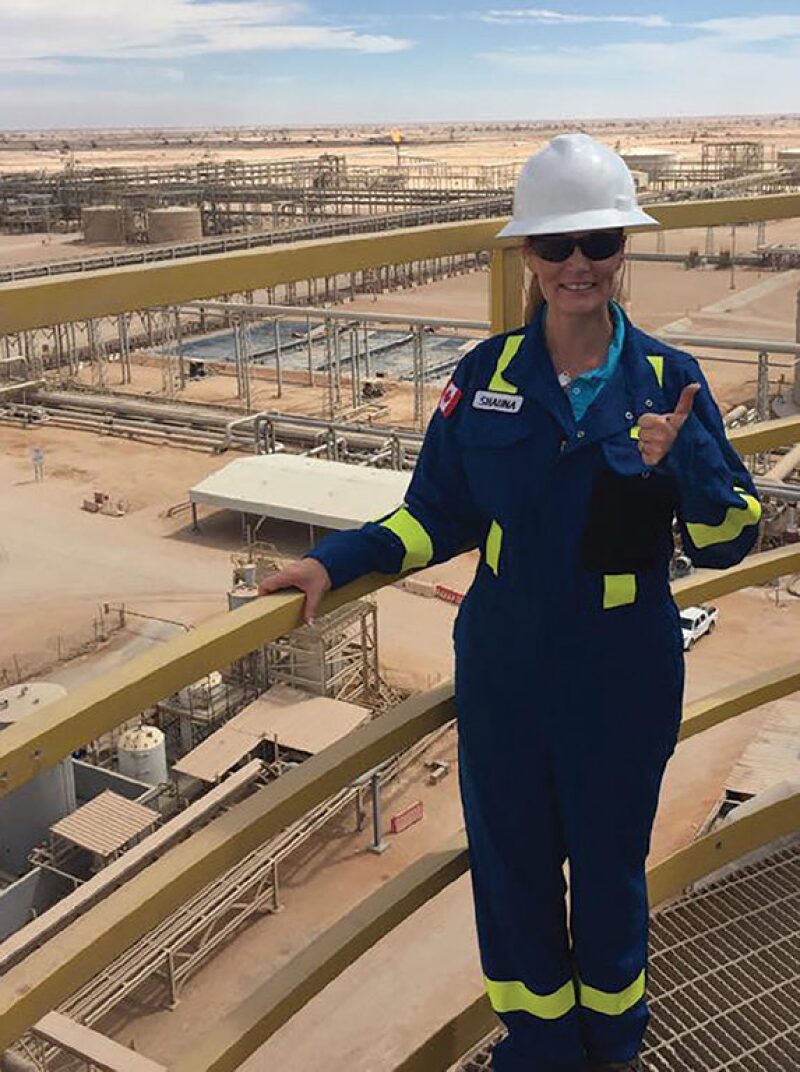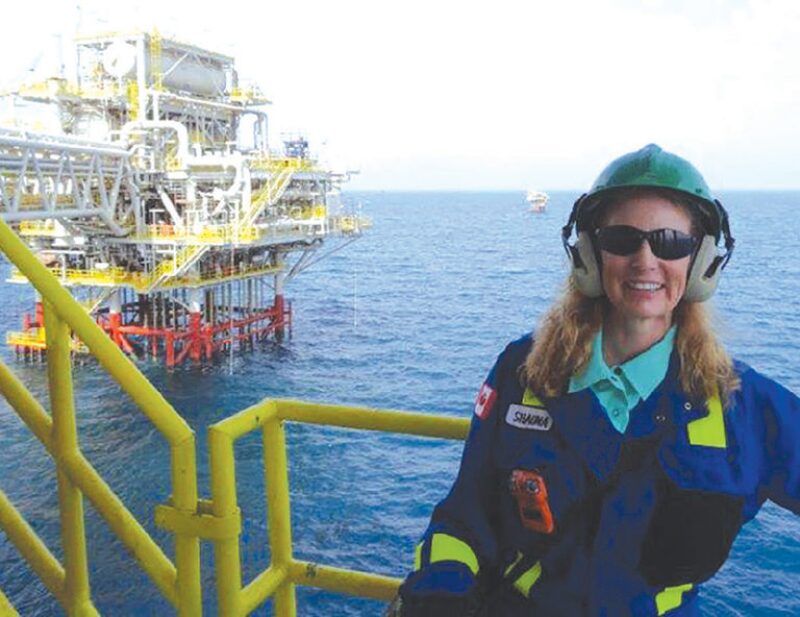Shauna Noonan will take office as 2020 SPE President during the SPE Annual Technical Conference and Exhibition 30 September–2 October in Calgary. She is the director of artificial lift engineering for Occidental Petroleum Corporation, based in Houston, where she directs the company’s efforts in artificial lift system performance globally. Prior to joining Oxy in late 2015, she worked worldwide on artificial lift projects and technology development at ConocoPhillips and Chevron for more than 22 years. She has authored or coauthored more than 25 technical publications on the subject of artificial lift and is a frequent speaker at industry events.
She has been an avid SPE volunteer in many roles since first serving as a student section officer. She served on the SPE International Board of Directors as the Technical Director for Production and Operations from 2012–2015. She has driven the development of industry standards and recommended practices for artificial lift systems while serving as chair for ISO and API committees, and has received industry awards for her contributions to the discipline.
Noonan holds a BS degree in petroleum engineering from the University of Alberta.
What key issues will you emphasize during your year as president?
I want to focus on strengthening five areas for SPE to remain a trusted, unbiased source of technical information, be the membership of choice for professionals in oil and gas, and to be respected both within and outside of our industry. When people see that SPE logo, it should be synonymous with excellence in terms of all our offerings to our membership.
The theme of my presidency is “SPE strong,” strengthening the core of our society. The five areas are:
- Strengthening the technical quality of our publications, presentations, and events
- Strengthening the tools and methods by which we disseminate knowledge to our members
- Strengthening our core functions, with an additional focus on automation and digital science
- Strengthening knowledge transfer in unconventional resources
- Strengthening the feedstock of incoming talent into the industry.
How will you go about strengthening these areas?
For the past year in my role as incoming president, I have been working with my fellow board members and SPE staff to develop the various initiatives around my five focus areas. I will share those details in each of my monthly JPT columns along with updates on our progress.
In the latest SPE Strategic Plan, there is an emphasis on instilling professional pride. What should be the focus?
I am proud to be a petroleum engineer but I, like many of our members, have not been adept at explaining what exactly our industry does. We need to learn how to have an effective conversation with those outside of our industry on how we lift the world out of poverty and improve the quality of life by providing affordable, sustainable energy while targeting carbon neutrality. An effective conversation is an open dialogue, not a PowerPoint presentation or a factual document.
Our members have been looking to SPE for guidance on how best to engage with those outside of our industry and we are addressing our membership’s needs with a “conversation toolkit” to be launched very soon. These materials have made my discussions stronger and more effective. Imagine the impact our Society can make if every member can engage others and all agree that we have the common goal of protecting the environment while sustaining/improving our quality of life.
What other trends or areas should SPE be adapting to?
One gap we are working to bridge is with engaging the automation engineers along with the data scientists. We are creating events, partnering with other associations, and finding ways to expand our membership and technical content in this area. The success of our industry’s digital transformation depends on having all disciplines working and collaborating together.
The industry has gone through many changes in the past few years. Do our members want something different out of their membership than they did before?
While SPE has a wealth of technical content in various formats (magazines, manuscripts, webinars, etc), it is not in an easily consumable format favored by our younger members. Visual and audio content needs to be accessible via mobile devices in a short period of time. With the launch of the SPE International app, we have a platform for providing new methods of knowledge transfer, such as podcasts and short training videos. I also believe that our members are not fully utilizing all of our tools and realizing the total value of having an SPE membership. It is like a gym membership. If you want to get physically fit, you need to go to the gym and use the equipment. I want members to understand how to get full value out of their membership but we need to provide better digital tools to keep up with members’ needs as well.

How do you make the case that SPE membership is relevant to someone’s development and his or her career?
What I stress to other SPE members, especially the students and young professionals, is that SPE opens doors of opportunity. When I visit with corporate executives, we discuss how SPE supplements their own employee technical development programs and provides more opportunities to practice and hone communication and leadership skills. Even as a young member, you can take on leadership roles within SPE, such as chairing program committees in preparation to qualify for management roles within your company.
People always talk about diversity and the power of diversity. SPE is globally, geographically, and functionally diverse, and there are great networking opportunities and learnings that come from that. Nothing rivals what SPE offers its members.
How do you make this pitch to students?
I use my own story on how my involvement within SPE opened doors of opportunity for me. SPE has helped to add rungs on my career ladder and allow me to climb higher than I ever thought possible.
When I joined the student chapter at the University of Alberta, SPE was relatively new to Canada. It was through SPE that we started integrating outside of our campus with various companies in the region. That is when the bug hit me about working globally, or at least coming to the US.
After attending a conference as a young engineer, I made up my mind that I was going to write and present a technical paper because just being in the audience does not necessarily help expand your network or show people the value you bring to the table. So I was determined to submit an abstract and to be able to showcase my abilities at the podium. That paper caught my management’s attention and resulted in a job transfer to the US. After that, I continued to publish papers and began to chair SPE program committees and that led to opportunities working on projects all over the world.
Did you always want to be a petroleum engineer?
I actually started out in pre-med in college. My mother wanted me to be a doctor but I ended up switching while I was in college from pre-med to engineering. What attracted me to engineering was the teamwork, and petroleum engineering appealed to me as I have always loved geology. The tipping point was a conversation with a professor, Dr. Don Flock, who said that petroleum engineering would provide more opportunities to work all over the world. He was right.
How difficult is it to manage a family/work balance?
Finding balance with a career and family is hard, especially for dual-career couples. It can even be harder if the employer is not supportive of its employees who need that balance between work and family. I have been fortunate to work for companies that not only supported it, but promoted it as well. While I raised my two daughters in a country where neither I nor my husband had any family, we were also blessed to have family members travel to the US to lend a hand when both of us had business trips scheduled at the same time.
Digital technology makes it easier to keep up with my daughters when I am traveling, whether it is FaceTime sessions or getting grades via text as their teachers are entering them into the system. It makes being a working parent so much easier.
Adding SPE involvement might seem to complicate work/life balance, but I was always able to demonstrate to my management that it would bring value to them, allowing me to incorporate most of my SPE obligations into my work hours. Given that, I have spent countless hours reviewing SPE papers while waiting for my daughters to finish their dance classes. I also learned that having a committee chair role allowed me better control of meeting schedules, letting me fit my SPE work in with my family and work obligations.
How has your career prepared you to be SPE president?
My entire career and SPE involvement has been global. I am not defined by a geographical region but by my technical ability and vast experience. I have worked as a rig supervisor, field engineer, completion engineer, production engineer, artificial lift specialist, and I have worked in local assets, technology development, engineering, and executive management.
Within SPE, I have served in various parts of the globe as a student officer, technical and associate editor, author, program chair, and on international award and technical advisory committees.
I have experienced the global business and culture of our industry and SPE and that brings a very positive perspective to the role of SPE president.

What are the biggest challenges facing the industry and SPE in the short term?
There are two big challenges, in my opinion, that we face in the short term.
The first challenge is attracting and maintaining the top talent needed to drive technological advances, and to drive improvements in all areas of our discipline. And we want this talent to see the potential of a long-term technical career. This includes academia as well, attracting and maintaining the best faculty. Regardless of business model, whether you are a service provider or an operating company—a bright, competent and diverse workforce is needed to succeed. This is a collective issue that SPE can champion/facilitate. Unfortunately, the cyclical nature of our industry and poor public perception has made attracting that top talent difficult.
The second and more important challenge is protecting SPE’s technical reputation as an unbiased and trusted source of information. SPE’s technical reputation is critical to succeed at public education and promotion of social responsibility and sustainability. If they trust us, they will listen to what we have to say. SPE’s technical reputation is also critical when entering new and emerging markets, attracting new members, maintaining and engaging our current members and corporate sponsors. SPE is a trusted brand that people need to continue identifying with technical excellence.

